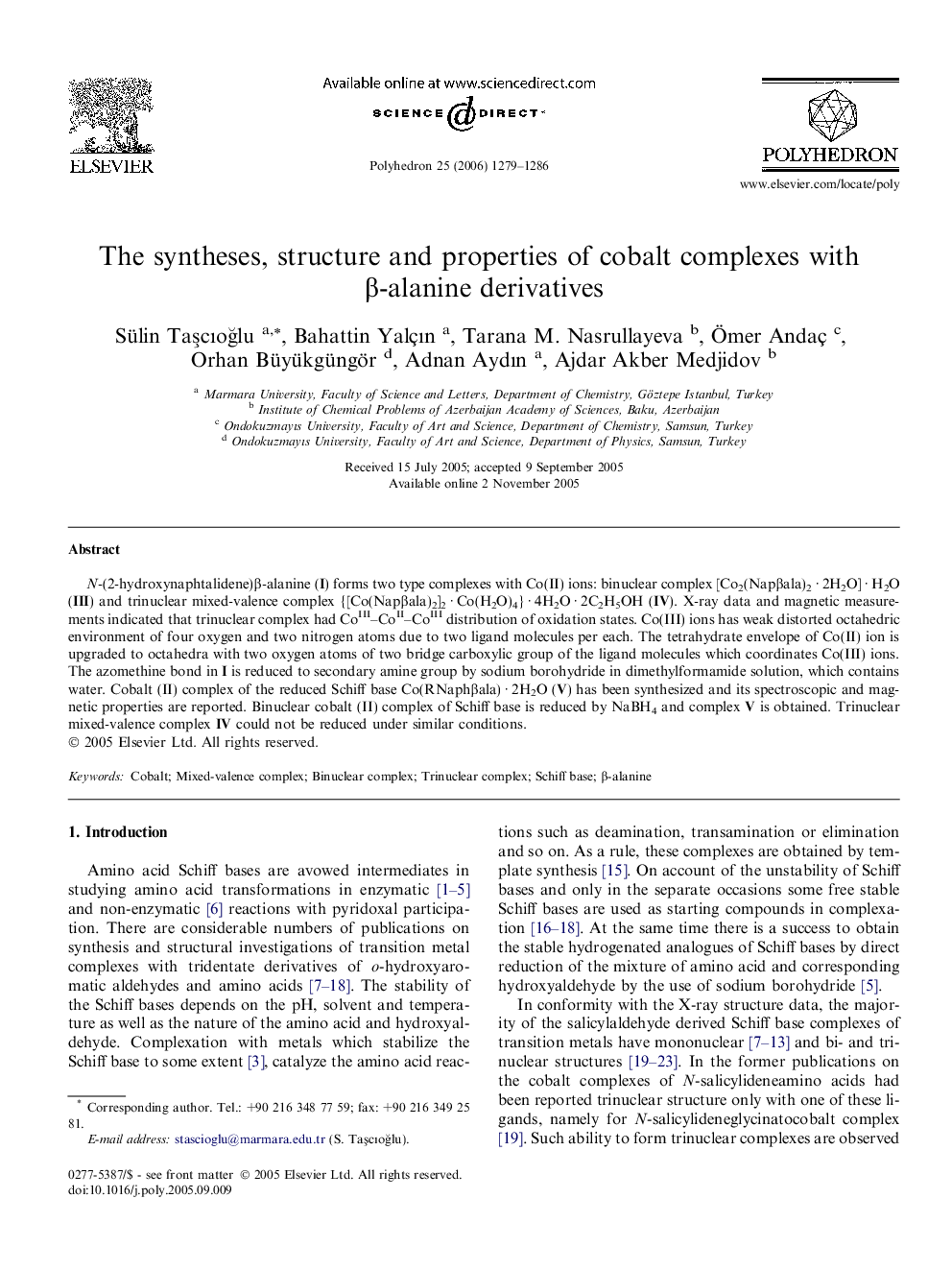| Article ID | Journal | Published Year | Pages | File Type |
|---|---|---|---|---|
| 1335754 | Polyhedron | 2006 | 8 Pages |
N-(2-hydroxynaphtalidene)β-alanine (I) forms two type complexes with Co(II) ions: binuclear complex [Co2(Napβala)2 · 2H2O] · H2O (III) and trinuclear mixed-valence complex {[Co(Napβala)2]2 · Co(H2O)4} · 4H2O · 2C2H5OH (IV). X-ray data and magnetic measurements indicated that trinuclear complex had CoIII–CoII–CoIII distribution of oxidation states. Co(III) ions has weak distorted octahedric environment of four oxygen and two nitrogen atoms due to two ligand molecules per each. The tetrahydrate envelope of Co(II) ion is upgraded to octahedra with two oxygen atoms of two bridge carboxylic group of the ligand molecules which coordinates Co(III) ions. The azomethine bond in I is reduced to secondary amine group by sodium borohydride in dimethylformamide solution, which contains water. Cobalt (II) complex of the reduced Schiff base Co(RNaphβala) · 2H2O (V) has been synthesized and its spectroscopic and magnetic properties are reported. Binuclear cobalt (II) complex of Schiff base is reduced by NaBH4 and complex V is obtained. Trinuclear mixed-valence complex IV could not be reduced under similar conditions.
Graphical abstractCobalt(II) reacts with N-(2-hydroxynaphtalidene)-β-alanine to give binuclear (CoII–CoII) complex III and trinuclear mixed-valence (CoIII–CoII–CoIII) complex IV. X-ray and magnetic data along with the spectral data indicated the weak distorted octahedric environment around Co(III) of IV. Binuclear complex is oxidized by oxygen to give trinuclear complex in the presence of Co(II) and is reduced by NaBH4 to give the Co(II) complex of reduced form of the Schiff base, for which kinetic data have been evaluated. Trinuclear complex IV could not be reduced.Figure optionsDownload full-size imageDownload as PowerPoint slide
